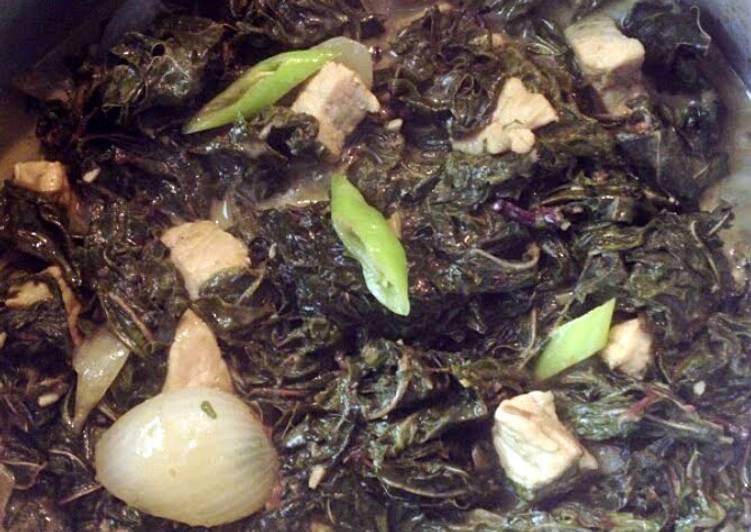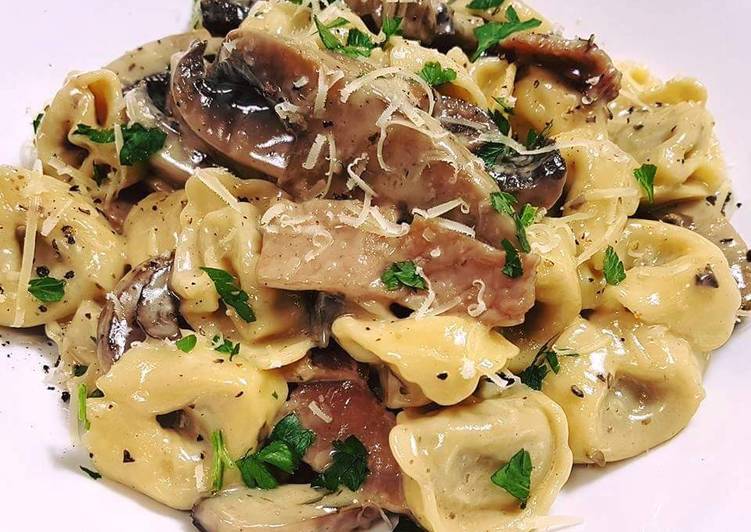
Hey everyone, it’s Jim, welcome to our recipe site. Today, I will show you a way to prepare a distinctive dish, creamy dried taro leaves. One of my favorites. This time, I’m gonna make it a bit unique. This is gonna smell and look delicious.
Laing is made of dried or fresh shredded or whole taro leaves and coconut milk. It is better when cooked with meat or shrimp but still can be served plain. I've learned how to cook this dish from a friend and became one of my favourite dishes to prepare for family and friends.
Creamy Dried Taro Leaves is one of the most popular of current trending meals in the world. It’s easy, it is fast, it tastes yummy. It’s appreciated by millions daily. They’re nice and they look fantastic. Creamy Dried Taro Leaves is something that I have loved my whole life.
To get started with this recipe, we must first prepare a few ingredients. You can cook creamy dried taro leaves using 8 ingredients and 6 steps. Here is how you can achieve that.
The ingredients needed to make Creamy Dried Taro Leaves:
- Make ready 1 packages dried taro leaves
- Prepare 2 can coconut milk
- Take 3 clove garlic, diced
- Get 4 medium jalapeno peppers, sliced diagonally
- Get 4 medium onions, julienned
- Make ready 1/2 kg pork meat, diced
- Make ready 2 tsp shrimp paste
- Get 1 tbsp canola oil
A simple no-fuss recipe that is as authentic as it can get! Stewed taro leaves is a classic Mauritian recipe. Leaves of the taro plant are cooked with some light spices. The result is a creamy silky texture.
Instructions to make Creamy Dried Taro Leaves:
- Heat the canola oil on a pan, medium heat
- Sautè the onion and garlic
- Add the pork and set fire to high
- Pour the coconut milk into the pan, simmer for 5-7 minutes
- Add in the taro leaves and simmer for 10 more minutes
- Add in the peppers and shrimp paste then simmer for 2-3 minutes
The Best Taro Leaves Recipes on Yummly Laing Recipe (taro Leaves With Coconut Milk), Sinanglay Na Tilapia, Kalua Pig - Hawaiian Pulled Pork. Taro leaves are the heart-shaped leaves of the taro plant (Colocasia esculenta), commonly grown in subtropical and tropical regions. Filipinos use both dried and fresh Taro leaves in a dish. Spicy, leafy, creamy with chunks of pork and the flavor of shrimps hovering in the background, laing is a dish whose origin is attributed to the Bicol region Many people balk at taro leaves because they can cause an itchy sensation in the throat.
So that’s going to wrap this up for this exceptional food creamy dried taro leaves recipe. Thank you very much for your time. I am sure that you can make this at home. There is gonna be more interesting food in home recipes coming up. Don’t forget to bookmark this page in your browser, and share it to your loved ones, colleague and friends. Thanks again for reading. Go on get cooking!


